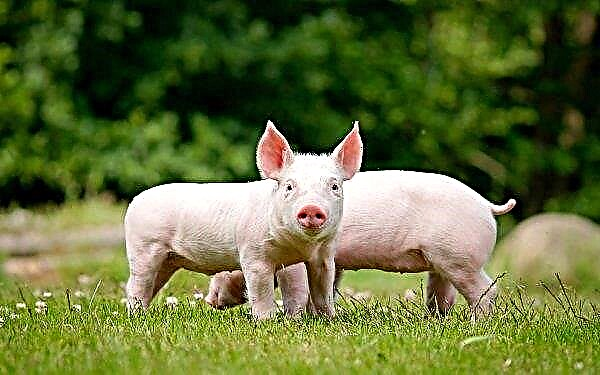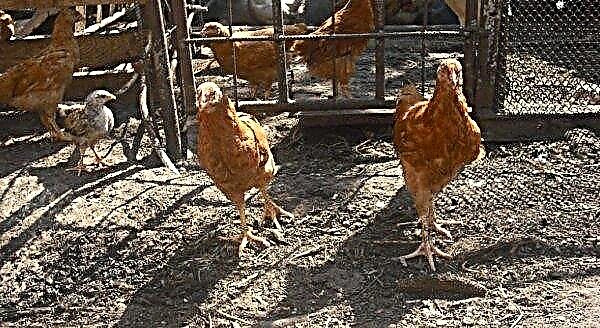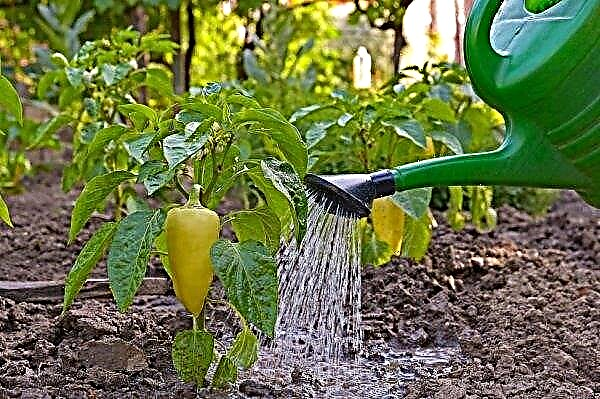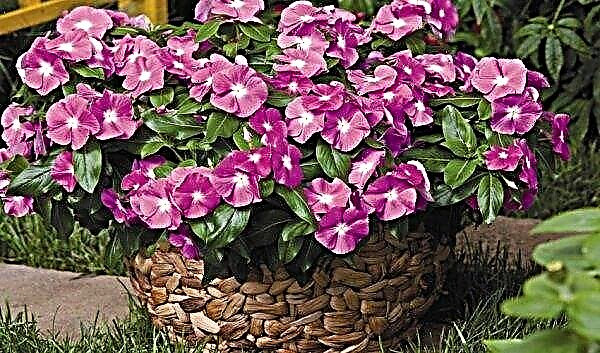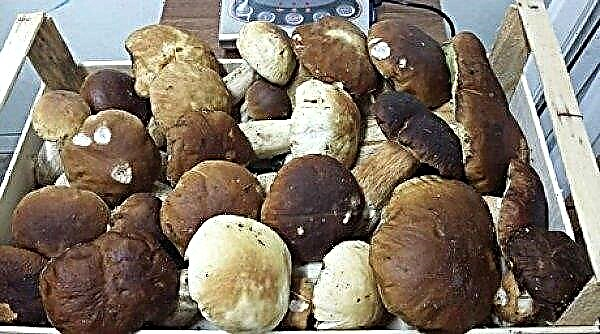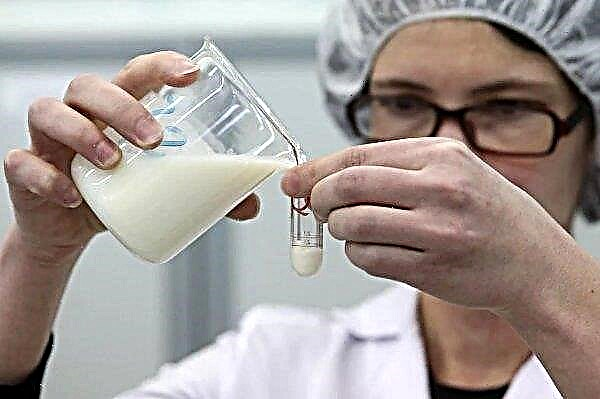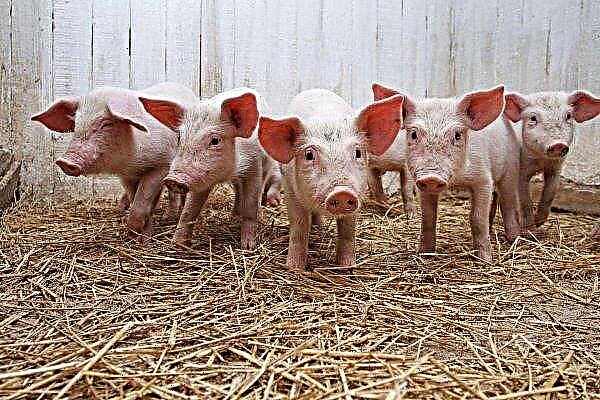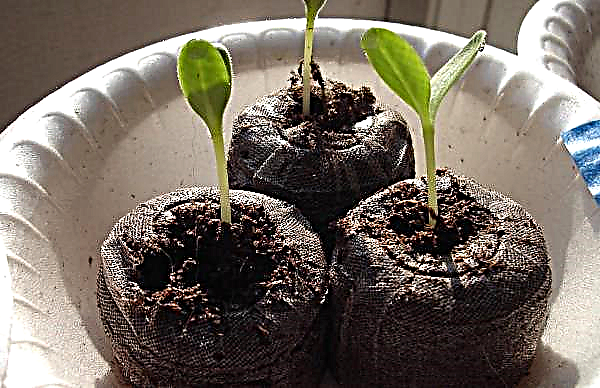Potatoes play an important role in the diet of any segment of the population, therefore it is not surprising that most of the planted area in the garden is allocated specifically for this crop. Although the tubers are capable of being stored for a long time, they still can not wait until the new crop. Because of this, many try to grow early varieties in their plots so that the break between the old and new crops is minimal. Very attractive for home cultivation is the Zhukovsky variety, and it will be discussed in the article.
Description and characteristics of the variety
The variety Zhukovsky was bred by Russian breeders. They crossed Hydra and Berry, wishing to get a culture resistant to disease, drought and suitable for cultivation in areas with a short summer.
Tests carried out after breeding work showed that in a different climate the variety also gives an excellent harvest, so now its range is quite extensive: from the Far East to the North-West.
The potato bush is low, medium sprawl, with branched stems covered with dark green foliage. The foliage is large, dissected, with pronounced veins and slight roughness. Flowers appear in compact inflorescences and look decorative. In place of faded flowers, fruits are not formed.
Advantages and disadvantages of the variety
- The advantages of the variety explain its so high popularity:
- matures early;
- 90–92% of marketable products of the total crop;
- resistance to mechanical damage and various diseases;
- allows for mechanized cleaning;
- good keeping quality;
- unpretentious;
- resistant to drought.
- There are also disadvantages:
- if the crop is harvested at the wrong time, its taste will deteriorate;
- in rainy weather is affected by late blight.
Did you know? Potatoes do not like neighborhood with weeds, because because of them there is a considerable loss of crop. So, in Russia, the value of these losses is 15%.
Ripening dates and productivity
Early variety: 60–75 days to mature. One bush gives about 10-12 tubers. The average weight of one tuber is 0.1–0.15 kg. Small potatoes are extremely rare. With such fertility and mass of the fruit, the commodity yield of the variety is 400–500 c / ha, and if the conditions are favorable and all the rules for growing the crop are observed, then up to 500–600 centners can be obtained from a hectare.
With such fertility and mass of the fruit, the commodity yield of the variety is 400–500 c / ha, and if the conditions are favorable and all the rules for growing the crop are observed, then up to 500–600 centners can be obtained from a hectare.
Taste qualities
The pulp is of excellent taste, does not crumble after cooking, does not change color on the cut. It can be used for cooking boiled, fried (including deep-fried) and stews. It is good at baking, but it is not recommended to cook mashed potatoes from it.
When is it better to plant a variety
Landing is made in April-May, depending on the region. Planting can be carried out when the soil warms up to + 5 ... + 6 ° C.
Planting and growing potato varieties Zhukovsky
The technology for growing Zhukovsky varieties is absolutely no different from growing other varieties of culture.
Crop rotation
For several years in a row, potatoes are not recommended to be planted on one site.
Did you know? La Bonnotte is the name of the world's most expensive potato variety. Its tubers are so tender that they are harvested exclusively by hand. A kilogram of this exquisite variety costs 500 euros.
Ideal predecessors: cucumbers, cabbage, legumes.
Soil requirements
The variety is absolutely unpretentious to the soil, which is why it is grown throughout Russia. But the yield in each region is different: in an area with clay soil, as well as depleted and acidic, it will be rather scarce (tubers are small and with a worse taste), it will be more often attacked by diseases.
But on light loamy or sandy soil, fueled by organic matter, the variety will give high yields.
If your region does not have suitable soil, do not despair. With proper soil treatment, you can achieve a very good crop. To do this, since the autumn, the earth is dug up (25 cm of the upper layer is removed), ash with compost is introduced. Be sure to clean the weeds. In the spring, nitrogen fertilizers are applied, the soil is plowed and leveled.
Preparing planting material
Last year’s crop is used for planting: it is carefully sorted, removing soft, small (less than 80 g), rotten, injured and moldy fruits. Sorted seed material is prepared for germination. It is folded into boxes and carried out in a warm room for a week and a half. It is better to cover the boxes with paper so that diffused light enters the potato. Periodically moisturize and turn it over.
Sorted seed material is prepared for germination. It is folded into boxes and carried out in a warm room for a week and a half. It is better to cover the boxes with paper so that diffused light enters the potato. Periodically moisturize and turn it over.
When shoots about 10 mm long appear in the eyes, tubers can be planted. They are pre-treated with insecticides, disinfected with potassium permanganate.
Step-by-step landing instructions
Landing is as follows:
- Grooves break through the beds at a distance of 0.7 m from one another.
- In the grooves, dig holes with an interval of 0.3 m.
- Organic fertilizers are poured into the hole.
- Tubers are laid on top of the fertilizer and sprinkled with earth.
Important! In cold regions, the bed is covered with a film or agrofibre to protect crops from frost.
Potato care after planting
The agricultural technology of the variety is quite simple, because it is absolutely unpretentious in care.
Hilling and loosening the soil
Hilling is necessary so that moisture is retained in the soil, and tubers are better formed. It is carried out in two stages:
It is carried out in two stages:
- initial - when the tops appear;
- final - 3 weeks after the initial.
By the time of the last hilling, flowering should be completed.
Loosening is carried out immediately after planting and is subsequently carried out regularly after watering. Together with him, weeding is also carried out.
Watering and feeding
The plant is fertilized three times during the growing season:
- with the appearance of sprouts;
- during the formation of the buds;
- at the end of flowering.
At the first two top dressings, you can use organic matter, and at the last stage, mineral complexes with a high nitrogen content should be used to better form tubers.
Watering is carried out when the soil dries. Moisture is poured on the grooves or in a drip way. The procedure is best done early in the morning or late in the evening so that moistened tubers do not overheat under the influence of sunlight. Weather conditions are also taken into account: they watered more intensively in drought, in the rainy season they stop or make moisture less often and not abundantly.
Weather conditions are also taken into account: they watered more intensively in drought, in the rainy season they stop or make moisture less often and not abundantly.
Important! Potato Zhukovsky calmly tolerates drought, but abundant watering with soil hardening is fatal for him.
Disease and pest resistance
Early varieties allow you to quickly get a crop, but, unlike later varieties, insecticides cannot be used for their processing, since they are removed from the fruits only after 50-60 days. Zhukovsky ripens in 60–75 days, therefore it is not advisable to carry out its treatment against diseases and the Colorado potato beetle with chemical preparations.
The variety is resistant to most diseases, but those that can attack it are better to prevent preventive measures:
- high hilling;
- foliar and root top dressing;
- the application of phosphorus-potassium fertilizers;
- treatment of tops with copper oxychloride.
Features of harvesting and storage of crops
If potato planting was carried out in early May, the first crop can be harvested at the end of June. The main cleaning is carried out until mid-August - by this time, the tops are completely dry. Overexposing tubers in the soil is not advisable, as they begin to rot, and their taste deteriorates. It is desirable to carry out cleaning on a sunny sunny day. You can apply machine harvesting technology: a dense peel will preserve the flesh from damage.
It is desirable to carry out cleaning on a sunny sunny day. You can apply machine harvesting technology: a dense peel will preserve the flesh from damage.
The selected vegetable is cleaned from the ground, dried for several days and stored in bags or boxes. In this form, it goes to the basement, where the temperature is maintained at +2 ... + 5 ° С. The room must have good ventilation. Subject to storage conditions, Zhukovsky potatoes will lie for 8 months.
The Zhukovsky variety is so unpretentious that it can be grown in any climate. The main thing at the same time is to properly prepare the soil, timely fertilize and carry out the hilling of the beds.

